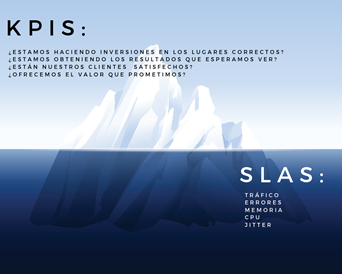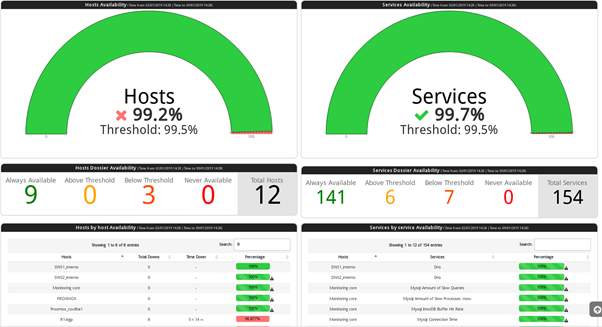One of the main reasons why a company uses a monitoring solution such as WOCU is to measure the performance of its infrastructure.
IT metrics are quantifiable measures that help managers in the network and systems departments to efficiently manage the IT infrastructure. These metrics also help align the investment in these areas with business strategy and customer experience.
How this is measured depends heavily on two indicators that we don't always fully understand what they mean: KPI (Key Performance Indicator or Key Performance Indicator and SLA (Service Level Agreement or Service Level Agreement).
The difference between a KPI and an SLA
It is important to understand that key performance indicators (KPIs) and service level agreements (SLAs) do not mean the same thing, although there is some overlap. In this post I would like to explain the difference between KPIs and SLAs and look at the practical applications of each.
What is a key performance indicator (KPI)?
Simply put, a KPI is a metric used to assess whether an organization is meeting its objectives. By definition, not all metrics can be "key", so KPIs are a select group of metrics that are considered essential to meeting objectives.

A KPI can highlight areas of the business that may be deviating from a path to achieve a defined objective. Similar to how a doctor needs to obtain information about a patient's vital statistics before recommending treatment, a department can use KPIs as critical information to make investment decisions.
What is a Service Level Agreement (SLA)?
An SLA is also a tool for measuring performance, but it is different from a KPI. Theory defines an SLA as an agreement between two parties on a given service.
In the world of IT monitoring, one of the parties is the service provider, responsible for what is being monitored (the network department, the backup department...) and the other party would be the company itself. Finally, the metric would be the threshold that should not be exceeded (above or below).

Let's take as an example the monitoring of jitter between two pieces of equipment:
Let's suppose that it has been established that the jitter cannot exceed the measurement of 20 ms, if it does not exceed this threshold, the company would be operating with adequate quality. This value, 20 ms, would be the SLA that the network administrator must meet for the company itself.
The difference between a KPI and an SLA can be narrow, taking again the previous example: the metric is jitter, the SLA is 20ms, and the KPI would measure how the SLA that was defined for the jitter metric is impacting, decreasing service quality or increasing customer complaints.

SLAs are different from KPIs.
SLAs are metrics that describe service agreements, thresholds, whereas KPIs are generally used to measure the performance of companies against their strategic objectives. However, KPIs can be part of an SLA to measure the delivery of defined service standards.
Companies use these metrics (SLAs) to calculate their customized service delivery KPI.

If the throughput and uptime are high and response time is low, the service KPI is likely to be met, regardless of the usage. But if utilization times and errors increase, while performance or uptime decreases, the stipulated KPI value will be exceeded, highlighting potential IT problems.
What is not defined cannot be measured.
That which is not measured, cannot be improved.
That which is not improved, is always degraded."
William Thomson Kelvin (Lord Kelvin)









